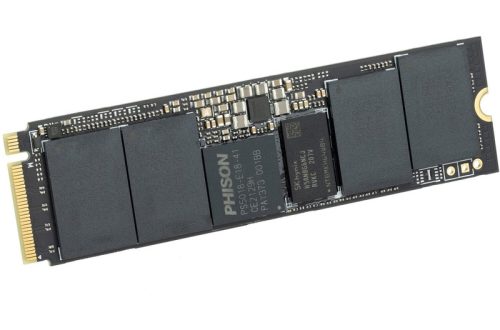Understanding Fan Curve Mechanics
Before setting up your CPU fan curve, it’s essential to grasp the mechanics behind fan control and how it impacts your system’s performance and noise levels. Familiarizing yourself with these concepts will allow you to make informed decisions when optimizing your fan curves for silence and cooling efficiency.
PWM vs DC Fan Control
Fans can be controlled using either Pulse Width Modulation (PWM) or Direct Current (DC) methods. PWM controls the fan speed by sending a series of pulses to the fan, effectively adjusting the spin rate without changing the power supply voltage. This method allows for more precise control over fan speeds, particularly at lower levels, leading to quieter operation under low-load conditions.
On the other hand, DC control changes the supply voltage to adjust the fan’s speed. While simpler, this method offers less granularity and can cause fans to operate at higher minimum speeds. This could result in unnecessary noise when your system isn’t under significant load.
3-Pin vs. 4-Pin Fan Considerations
The distinction between 3-pin and 4-pin fans relates to the control method they accommodate. A 3-pin fan operates with DC control, relying on voltage adjustments to regulate speed. In contrast, a 4-pin fan supports PWM control, with the fourth pin dedicated to the modulation signal.
4-pin PWM fans are typically recommended for optimal control within a PC build. They allow for smoother and more precise speed adjustments, leading to better cooling and quieter operation compared to 3-pin DC control fans.

The Relationship Between Fan Speed, Temperature, and Noise
A well-implemented fan curve ensures that your fans run as slowly and quietly as possible while still providing adequate cooling. As the CPU temperature increases, the fan speed should also rise to accommodate the additional cooling needed. However, spinning the fans faster than necessary can lead to excessive noise.
Creating an effective fan curve involves understanding the temperature thresholds where cooling becomes critical and setting fan speeds that balance noise with the cooling demand. This delicate equilibrium helps maintain a silent system under low load, while ensuring proper cooling when performance is pushed to the peak.
By understanding the mechanics behind fan control, you’re now equipped to establish your fan curve baseline and move towards a customized silent profile, ensuring your computing experience is both cool and quiet.
Establishing Your Fan Curve Baseline
Before diving into the specifics of customizing your CPU fan curve for quieter operation, it’s crucial to establish a baseline from which you can make adjustments. This baseline will provide you the initial fan settings that your system defaults to and serves as a reference point for future customization.
The Role of Motherboard BIOS in Fan Curve Settings
Most modern motherboards come with a built-in hardware monitor or fan control section in the BIOS. This utility allows you to access and modify the default fan curve settings applied to your CPU fan. Accessing the BIOS is typically done by pressing a key, such as Del or F2, during the system boot-up. In the BIOS, you can observe the predefined fan curves and how they correlate with temperature thresholds. By understanding these default settings, you can better determine how you might wish to alter them for improved silence without compromising cooling effectiveness.
Utilizing Software Utilities for Fan Curve Customization
Apart from the BIOS, there are several software utilities available that provide fan curve customization options within your operating system’s environment. These tools often offer a more user-friendly interface and additional features for monitoring temperatures and testing stability. Software options like SpeedFan, MSI Afterburner, or the manufacturer-specific utilities are great starting points for those who prefer fine-tuning within a graphical interface. They can be especially useful for users with multi-fan setups or for those who want to create different profiles for various use-case scenarios.
Starting with Default or Balanced Profiles
Beginning with the default or balanced profiles provided by your motherboard or software utility can be an effective approach, as these are typically designed to provide adequate cooling for a wide range of systems. From the balanced profiles, observe the system performance and acoustic levels during various workloads. If the noise levels are too high for your liking, or temperatures are not within the expected range, adjustments can be made to these profiles. Consider experimenting with silent modes if available, as they are biased towards lower fan speeds at the cost of elevated temperatures, creating a quiet operating environment.
By fully understanding the groundwork provided by default BIOS settings and software utilities for fan curves, you can move effectively towards customizing a fan curve that suits both your cooling requirements and noise preferences. Remember, the ideal starting point is one that provides sufficient cooling while maintaining a comfortable noise level for your working or gaming environment.

Customizing Your Fan Curve
With a firm grasp of the basics and your initial fan curve baseline established, the next step is tailoring your CPU fan curve to strike the perfect balance between silence and cooling. This involves tweaking the fan speeds at various temperature levels with the goal of minimizing noise while avoiding overheating.
Creating a Silent Fan Curve: Ideal Settings
A silent fan curve prioritizes low noise output, especially at lower temperature ranges, where cooling demands are not as high. Here’s how you can create an ideal silent fan curve for your setup:
- Low-Temperature Range: Set the fan to operate at a low speed – as quietly as possible – for temperatures up to a reasonable threshold, such as 40-50. This keeps the system cool during basic operations without causing unnecessary noise.
- Mid-Temperature Range: As your system’s demand increases, so should your fan speeds. Between moderate temperatures, such as 50 to 70, the fan speed should see a moderate increment to accommodate the additional heat without a drastic increase in noise.
- High-Temperature Response: When heavy loads push temperatures further, such as during intensive gaming or rendering tasks, you’ll need a more aggressive fan speed. Ensure that the fans ramp up to prevent overheating while tolerating more noise, given the critical need for cooling at that point.
Adjusting Fan Speeds for Different Temperature Thresholds
Adjusting fan speeds appropriately for varying temperature thresholds ensures both effective cooling and a quiet operation. It might take some experimentation to find the right settings for your specific system:
- Idle to Low Load: Define a gentle fan curve that maintains silence for temperature ranges typical of idle or light usage.
- Medium Load: Tailor the curve to increase fan speeds slightly for regular day-to-day tasks that place a moderate load on your CPU.
- High Load to Peak Performance: Construct the fan curve to escalate more promptly and significantly under heavy loads, ensuring efficient heat dissipation.
Testing and Monitoring for Performance and Acoustics
Testing and monitoring are vital after adjusting your fan curve. Use system monitoring tools to observe the relation between temperature, fan speed, and noise during different workloads. Monitoring allows you to refine the curve further:
- Monitor how the fan speed responds as the CPU’s temperature climbs.
- Check for any signs of thermal throttling during heavy usage.
- Listen for the noise levels to ensure they remain within your comfort zone.
- Adjust your fan curve iteratively based on your findings and preferences.
By customizing your fan curve with careful consideration for performance and acoustics, you can enjoy a computing experience tailored to your personal needs. A well-curated fan curve not only gives you control over your system’s thermal management but also contributes to a tranquil working or gaming environment.
Tips and Tricks for Optimization
When fine-tuning your CPU fan curve for the ideal balance between silence and cooling, there are a few additional tips and tricks that can help you achieve optimal efficiency. Here are some guidelines to ensure you get the best out of your custom fan curve settings.
Balancing Cooling Efficiency with Noise Reduction
To create a well-balanced system, prioritize cooling where it’s needed the most and optimize for silence when possible. Consider these points:
- Cooling Priority: Identify components or situations that require better cooling and adjust fan speeds accordingly. For instance, during gaming or heavy computational tasks, prioritize cooling over silence.
- Silent Operation: For everyday tasks such as web browsing or document editing, you may prefer a near-silent operation. Aim for the lowest fan speeds that still maintain safe CPU temperatures.
- Acoustic Profile: Understand the acoustic profile of your fans at different speeds. Some fans might have an annoying pitch or resonance at certain RPMs, which you’ll want to avoid.

Monitoring System Temperatures for Informed Adjustments
Constantly monitor your system’s temperatures to make informed adjustments to your fan curves:
- Real-time Monitoring: Utilize software tools that provide real-time temperature readings. This will help you detect heat spikes and modify fan speeds before they become an issue.
- Temperature Trends: Look out for temperature trends during different usage scenarios. This can help you predict when to ramp up fan speeds proactively.
- Ambient Temperature Influence: The temperature in your room can significantly affect your system’s cooling needs. Consider adjusting fan curves seasonally to account for changes in room temperature.
When to Consider Alternative Cooling Solutions
Sometimes, adjusting your fan curve might not be enough to achieve the desired balance between noise and cooling. In such cases, consider the following alternatives:
- Upgrade Fans or Heatsink: If you’re still experiencing high noise levels or inadequate cooling, consider upgrading to more efficient fans or a larger heatsink.
- Water Cooling: For those looking for an even quieter operation with excellent heat dissipation, a water cooling solution might be the way to go. These systems can offer superior cooling with minimal noise.
- PC Case Airflow: Good airflow within your PC case significantly contributes to cooling efficiency. Ensure that you have a well-ventilated case with optimal fan positions for intake and exhaust.
By applying these tips and tricks, you can take your system’s thermal management to the next level. Optimization is an ongoing process, and with a bit of patience and experimentation, you can achieve a quiet yet well-cooled PC that meets all your usage demands.




